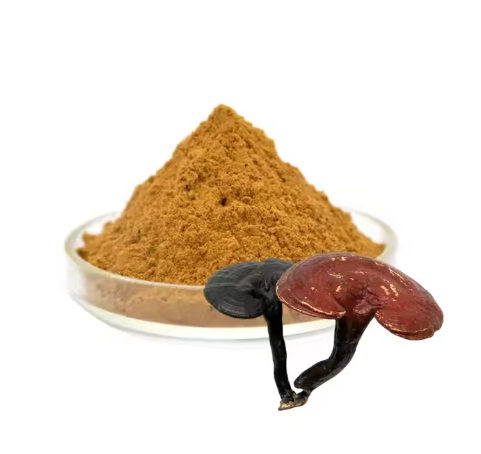- English
- French
- German
- Portuguese
- Spanish
- Russian
- Japanese
- Korean
- Arabic
- Greek
- German
- Turkish
- Italian
- Danish
- Romanian
- Indonesian
- Czech
- Afrikaans
- Swedish
- Polish
- Basque
- Catalan
- Esperanto
- Hindi
- Lao
- Albanian
- Amharic
- Armenian
- Azerbaijani
- Belarusian
- Bengali
- Bosnian
- Bulgarian
- Cebuano
- Chichewa
- Corsican
- Croatian
- Dutch
- Estonian
- Filipino
- Finnish
- Frisian
- Galician
- Georgian
- Gujarati
- Haitian
- Hausa
- Hawaiian
- Hebrew
- Hmong
- Hungarian
- Icelandic
- Igbo
- Javanese
- Kannada
- Kazakh
- Khmer
- Kurdish
- Kyrgyz
- Latin
- Latvian
- Lithuanian
- Luxembou..
- Macedonian
- Malagasy
- Malay
- Malayalam
- Maltese
- Maori
- Marathi
- Mongolian
- Burmese
- Nepali
- Norwegian
- Pashto
- Persian
- Punjabi
- Serbian
- Sesotho
- Sinhala
- Slovak
- Slovenian
- Somali
- Samoan
- Scots Gaelic
- Shona
- Sindhi
- Sundanese
- Swahili
- Tajik
- Tamil
- Telugu
- Thai
- Ukrainian
- Urdu
- Uzbek
- Vietnamese
- Welsh
- Xhosa
- Yiddish
- Yoruba
- Zulu
Why Do We Keep Using Reishi Mushroom Extract Without Thinking Twice?
There are some ingredients that end up in a build not because they were planned from the start, but because they make things easier when it counts. Reishi Mushroom Extract is one of those that quietly moved from test blends into real production and didn’t leave after that. Not because someone pushed for it or made a pitch, but because it worked without adding extra steps. That’s usually all it takes for something to stay.

The first time we used it, there wasn’t a long conversation. It came up during one of those late-stage formulation reviews where nothing’s broken, but nothing’s exactly right either. The blend was close, but missing something—hard to explain, more of a texture and tone issue than a performance gap. Someone had a sample on hand, it got added at low percentage, and it filled the space. Not dramatically. Not in a way that got anyone excited. But it felt more complete. We moved forward. That kind of addition tends to get remembered.
From then on, it started appearing more often. In builds where we were trying to keep actives natural but still have structure. In SKUs aimed at general support rather than targeted function. In stuff where the brief was, basically, “make it feel like it has depth but don’t go too far.” Reishi Mushroom Extract turned out to be good at that. Especially when the rest of the ingredient list was already pulling its weight and just needed a little something to round it out. We didn’t really sit down and decide to use it across the board, but it ended up in more folders than expected.

We’ve had a few batches where it didn’t work out. Usually those were the ones where the base flavor was already earthy or bitter and didn’t need help leaning further in that direction. Reishi Mushroom Extract has a tone you can’t ignore if it goes too high. In one round we tried doubling the percentage from a previous build just to test limits, and it immediately pushed too far. Ended up having to dial it back and rebalance with a masking agent we weren’t planning on using, which threw off the timeline. Lesson learned. Since then we’ve kept it low, more support than feature.
On the sourcing side, it’s been more reliable than most botanicals we’ve handled. The good suppliers don’t play around with spec drift, and the powder behaves. We’ve never had to rerun a batch because of a moisture issue or a weird texture shift, and that’s not nothing. Especially when you’ve got 5+ ingredients going into a base and at least one of them is always giving the production line a problem. Reishi Mushroom Extract rarely ends up being that problem. Even after long transit, it holds its structure. Mixes well, doesn’t cake, plays nicely in capsules or powder blends. That helps more than most people notice.
There’s also something to be said about how easily it passes internal review. Nobody flags it. Not legal, not marketing, not regulatory. It’s a name people recognize, even if they don’t know what it does in detail. You don’t have to write a paragraph to explain why it’s there. Just list it, note the source, and move on. For ingredients that stick around, that’s a big reason why. It doesn’t create new work. It fills a function, and it keeps moving. If it disappeared tomorrow, we’d find something else, but we’d also lose a bit of the shorthand we’ve built up. Having things you don’t have to explain is part of the speed in development.

We tried switching it out once in a refresh round just to see if anyone noticed. Changed the base slightly, subbed in another mushroom extract that was newer on the supply list. Nothing against the new one—it tested fine, blended fine, didn’t raise flags. But it didn’t land the same. No one said it directly, but there were comments like “it feels thin” or “something’s not clicking.” That kind of feedback doesn’t show up on paper, but you hear it enough and start reading between the lines. We quietly put Reishi Mushroom Extract back into the next draft and those comments stopped. Sometimes that’s all the validation you need.
We’ve even started using it as a default placeholder during early mockups. Not always the final version, not always at final levels, but it’s there. A kind of baseline when we’re not sure what the blend needs yet. Because we know it won’t hurt the structure, won’t throw off solubility, and won’t make the next round of reviews harder. It’s a small thing, but small things add up. In a year full of half-planned launches and shifting timelines, having a steady input is more valuable than a flashier one that needs six weeks of testing.
If you look at our recent formulas, Reishi Mushroom Extract shows up more than most people would guess. Not because it’s a trend. Not because anyone is out there promoting it hard. But because it does its job and doesn’t pull attention away from the rest of the blend. It’s part of what keeps the build clean and stable. We don’t need to explain it. It’s just there, working in the background. That’s the kind of role that rarely gets credit, but always gets included.

There’s no punchline to this one. No big reveal. Just a quiet ingredient that keeps being useful in places that need subtle support without rewiring the whole product. And when that’s the need, Reishi Mushroom Extract is often what we reach for. Not because we have to, but because it makes sense.
IF You Are Interested In The Products We Operate And Other Related Categories, Please Write To Us And Contact Us. At The Same Time, You Can Also Browse Our Website To Find The Products You Want. We Provide Customized Services And Look Forward To Establishing Cooperation With You.
Email:sales@greenherbbt.com
